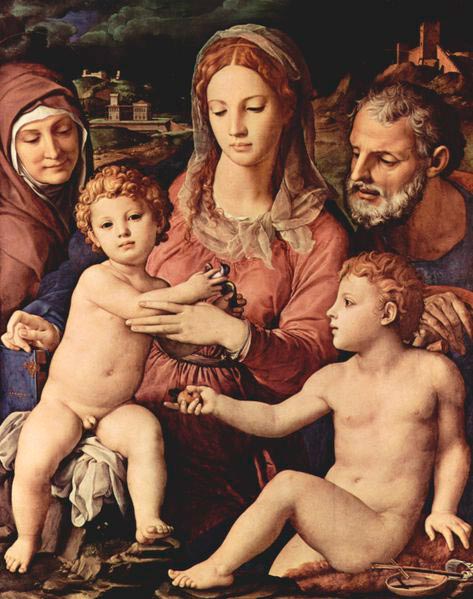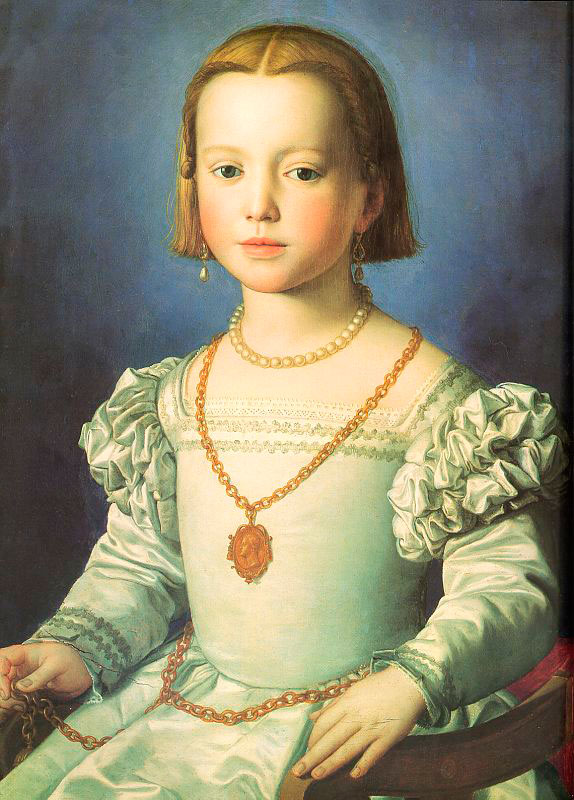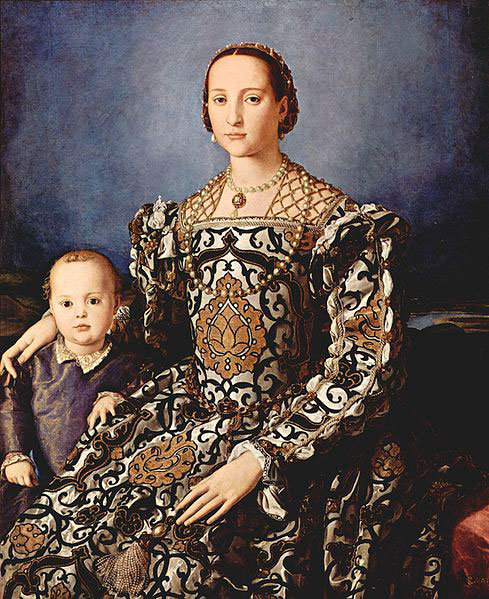
Broninzo, Holy Family, 1534-1540
BRONZINO
Agnolo di Cosimo (November 17, 1503 – November 23, 1572), usually known
as Il Bronzino, or Agnolo Bronzino (mistaken attempts also have been made in
the past to assert his name was Agnolo Tori and even Angelo (Agnolo) Allori),
was an Italian Mannerist painter from Florence. The origin of his nickname, Bronzino
is unknown, but could derive from his dark complexion, or from that he gave many
of his portrait subjects. It has been claimed by some that he had dark skin as
a symptom of Addison's disease, a condition which affects the adrenal glands
and often causes excessive pigmentation of the skin.
Bronzino was born in Florence around 1503. According to his contemporary Vasari, Bronzino was a pupil first of Raffaellino del Garbo, and then of Pontormo. The latter was ultimately the primary influence on Bronzino's developing style and the young artist remained devoted to his eccentric teacher. Indeed, Pontormo is thought to have introduced a portrait of Bronzino as a child into one of his series on Joseph in Egypt now in the National Gallery, London.[1] Bronzino's early indebtedness to Pontormo's instruction can be seen in the arresting little Capponi Chapel in Santa Felicita, Florence. During the mid 1520s, the two artists worked together on this commission, though Bronzino is believed to have mostly served as an assistant to his teacher on the masterly Annunciation and The Deposition from the Cross frescoes that adorn the main walls of the chapel. The four tondi that contain images of the evangelists above are more of a mystery: Vasari wrote that Bronzino painted two of them, but his style is so similar to Pontormo's that scholars still debate the specific attributions.[2]
Towards the end of his life, Bronzino took a prominent part in the activities of the Florentine Accademia del Disegno, of which he was a founding member in 1563.
The painter Alessandro Allori was his favourite pupil, and Bronzino was living in the Allori family house at the time of his death in Florence in 1572 (Alessandro was also the father of Cristofano Allori).[3] Bronzino spent the majority of his career in Florence.
The child in the work of Bronzino:

Broninzo, Holy Family, 1534-1540

Bronzino,
Bia, the Illegitimate Daughter of Cosimo I de' Medici, 1542

Bronzino, Eleanor of Toledo, 1544-45, Oil on wood
![Helnwein Child: Broninzo, Venus, Cupid, Folly and Time [Allegory of the Triumph of Venus], Oil on wood, 1540-1545](artists_images/bronzino3.jpg)
Broninzo, Venus, Cupid, Folly and Time [Allegory
of the Triumph of Venus], Oil on wood, 1540-1545